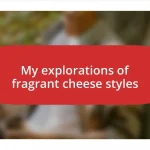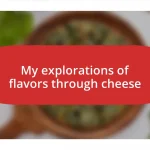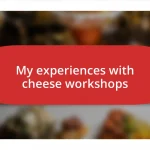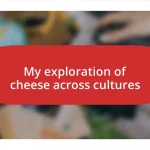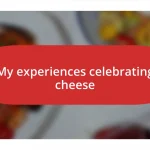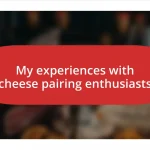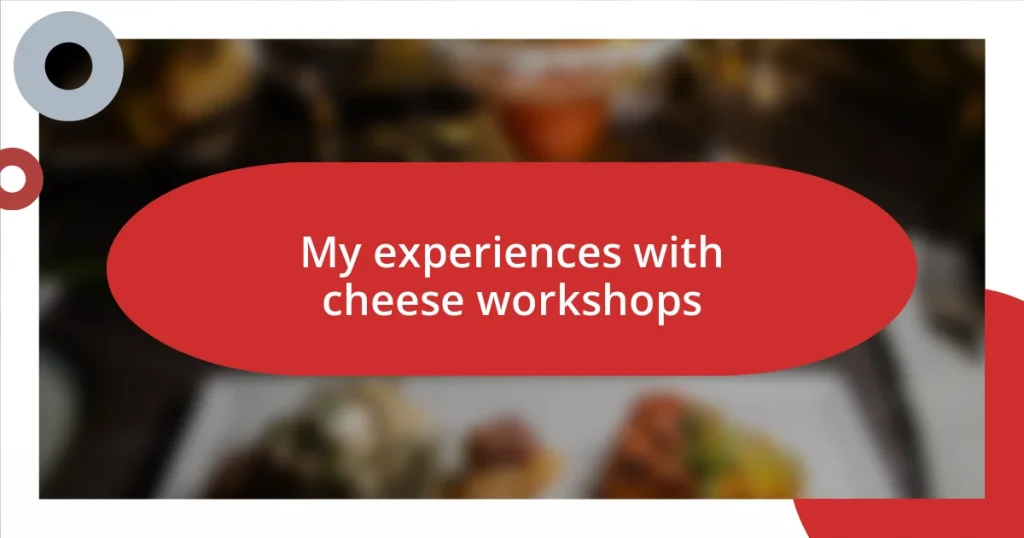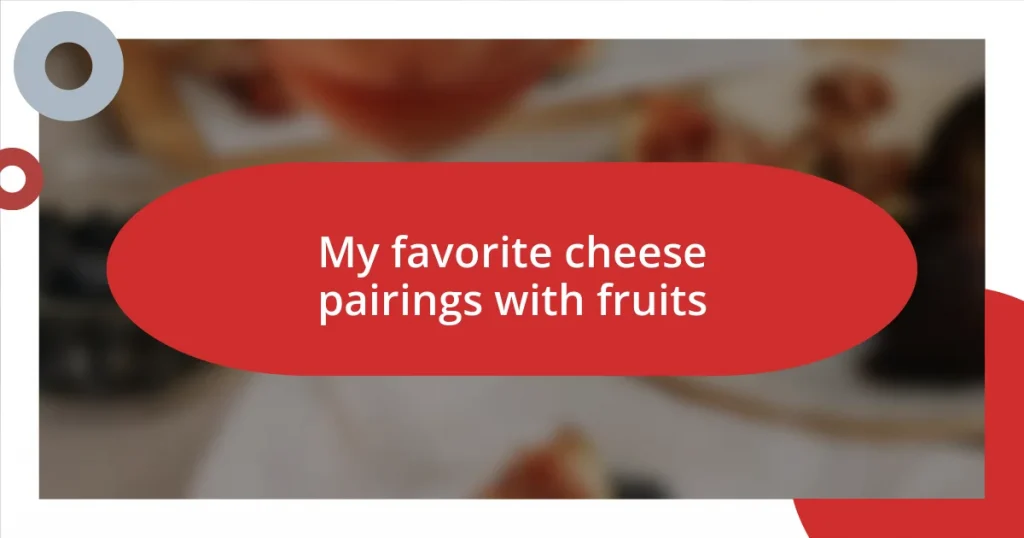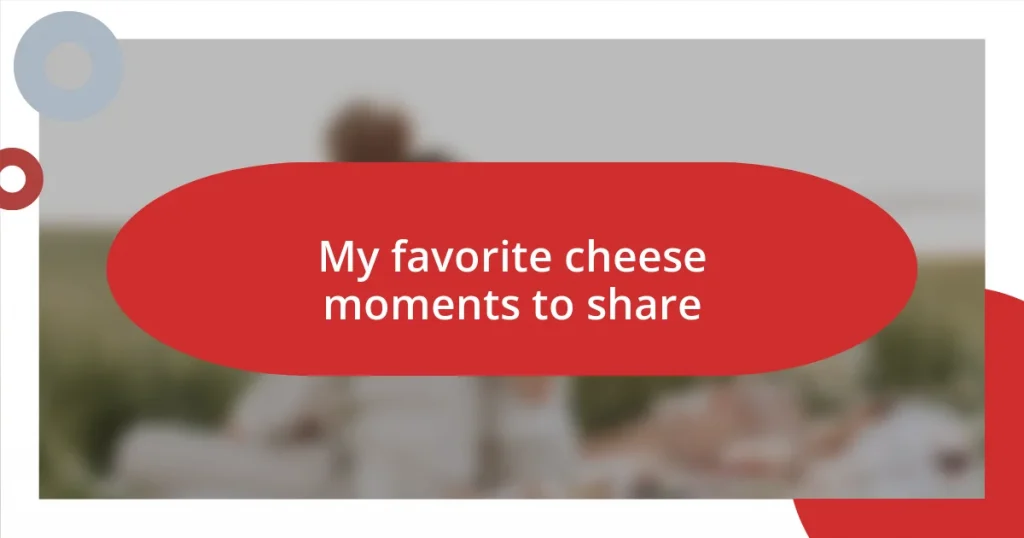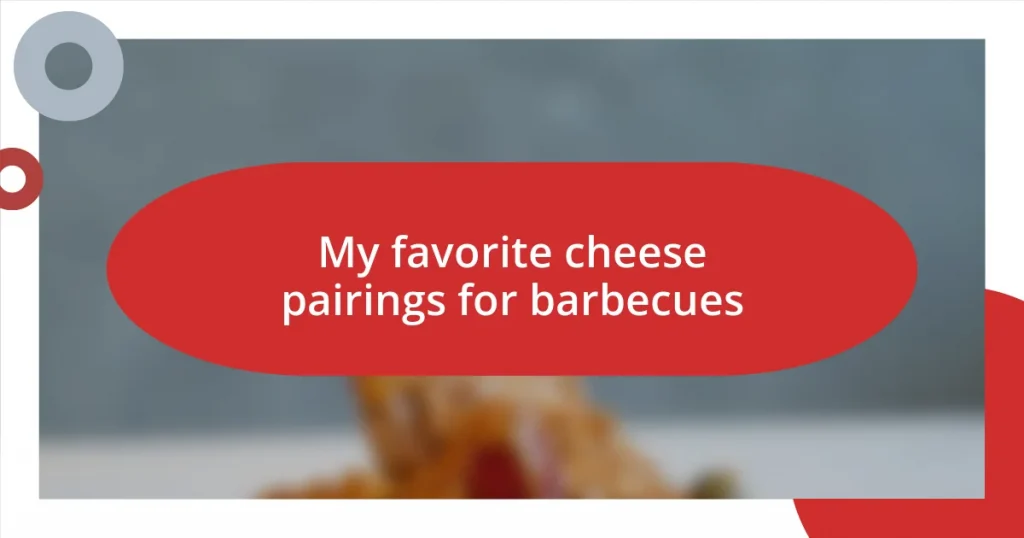Key takeaways:
- Cheese workshops provide a community experience, allowing participants to connect over the shared joy of cheese-making and learning.
- Essential tools, such as molds, thermometers, and recipe books, enhance the cheese-making process and encourage creativity.
- Exploring cheese pairing techniques and creating unique recipes deepen one’s appreciation for cheese and facilitate connections with others through shared culinary experiences.
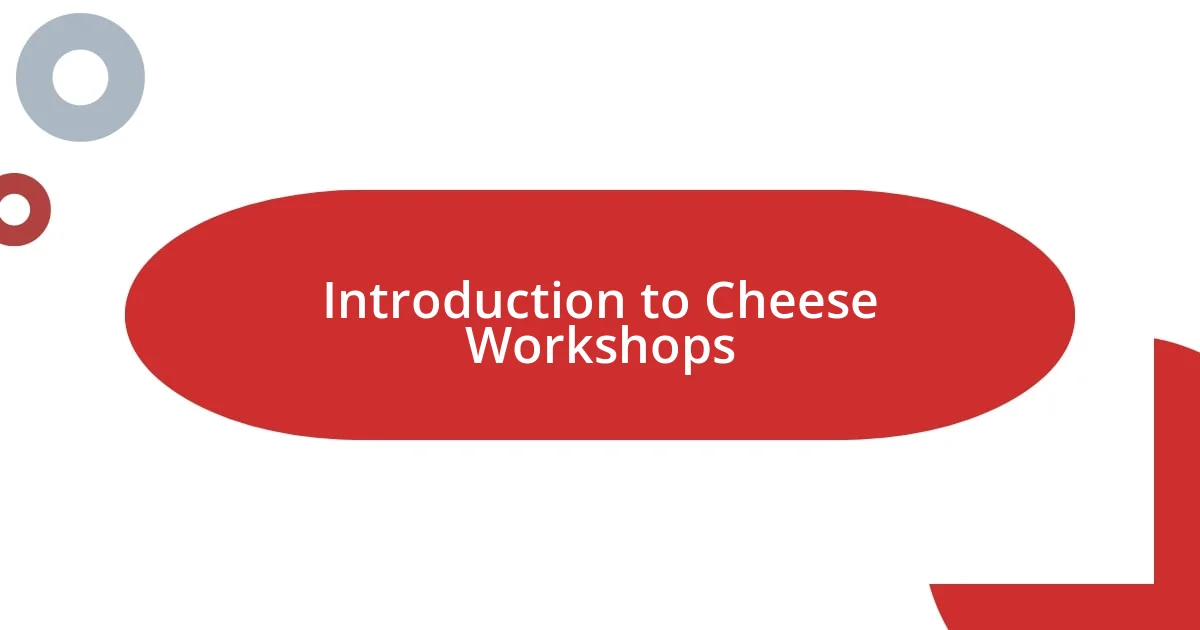
Introduction to Cheese Workshops
Cheese workshops are a delightful experience that blends artistry with science. I still remember my first workshop where I nervously anticipated what I would create. As I learned to craft my own cheese, I felt like a kid in a candy store, immersed in flavors and textures I had never imagined before.
There’s something incredibly satisfying about transforming simple ingredients into a delicious product. Have you ever wondered how your favorite cheeses are made? Participating in these workshops not only demystifies the cheese-making process but also allows you to connect with fellow cheese lovers who share your passion. I found myself exchanging laughter and stories as we all stumbled through our first attempts at crafting mozzarella.
What truly strikes me about cheese workshops is how they foster a sense of community. Picture this: a group gathered around a table, hands busy working with curds and whey, all while sipping on a glass of wine. This experience reminded me that cheese isn’t just a culinary delight; it’s a gateway to forming connections and creating memories—all through the joy of shared experiences.
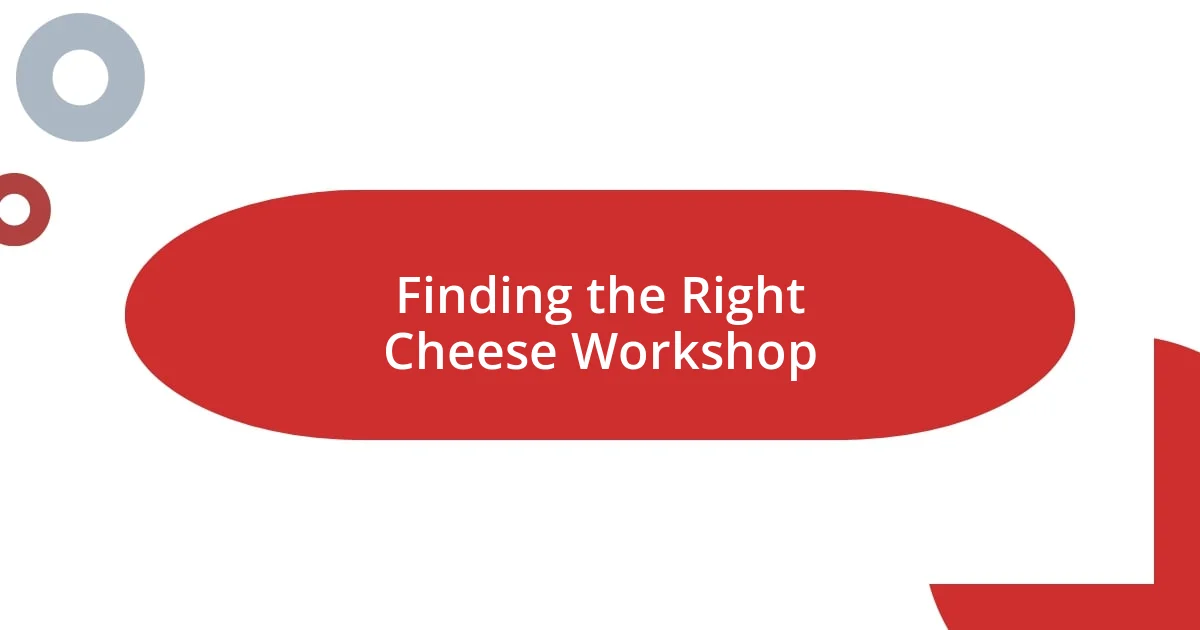
Finding the Right Cheese Workshop
Finding the right cheese workshop is crucial for a fulfilling experience. When I first researched options, I became overwhelmed by the variety available. I quickly learned that factors like size, instructor expertise, and the types of cheese offered can greatly influence the overall experience.
Here are some key points to consider when choosing your workshop:
- Instructor Experience: Look for workshops led by certified cheesemakers or those with a solid background in dairy science.
- Group Size: Smaller groups often allow for more hands-on learning and personal attention.
- Workshop Focus: Decide if you want to focus on a specific cheese type, like mozzarella or blue cheese, or explore a range of options.
- Location and Accessibility: Choose a workshop that’s convenient for you to attend, whether in-person or online.
- Reviews and Recommendations: Check testimonials and feedback from previous participants to gauge the quality of the experience.
Ultimately, the right workshop will not just teach you about cheese but also connect you with like-minded enthusiasts who share your passion. I recall walking into my second workshop, which focused solely on aged cheeses. The excitement in the air was palpable, and I instantly felt part of a community where everyone was eager to learn and indulge in the rich complexities of flavor.
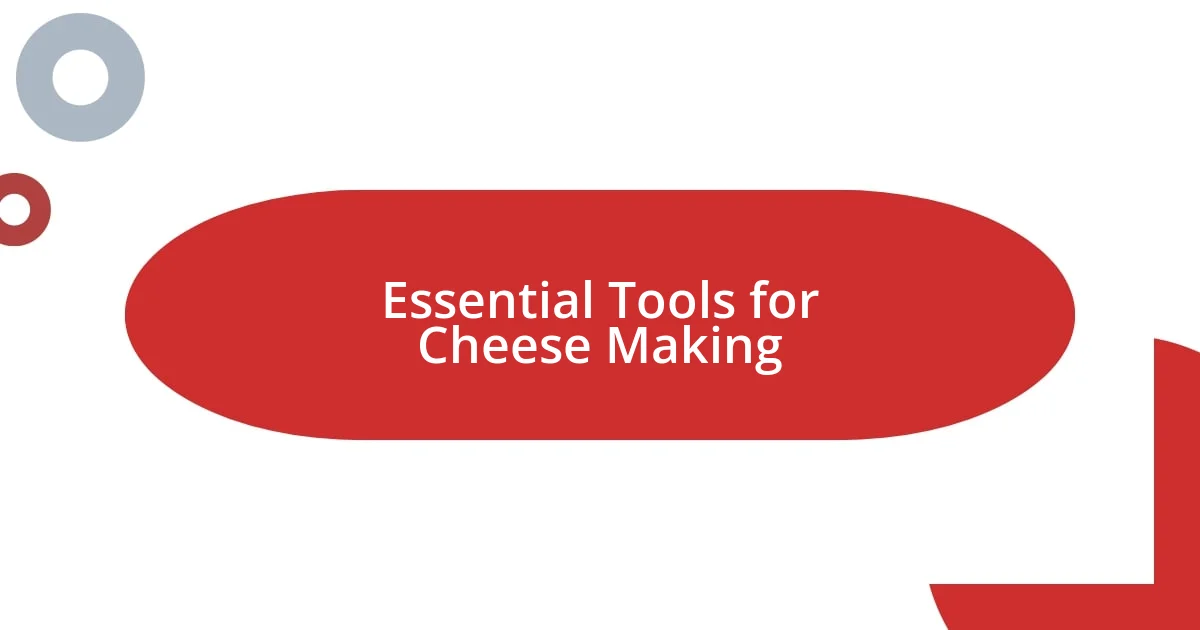
Essential Tools for Cheese Making
When it comes to making cheese, having the right tools is non-negotiable. I vividly remember the day I gathered my essentials for my first cheese-making adventure. The tools I sliced through the process made all the difference in crafting a smooth mozzarella. A large stainless-steel pot, a thermometer for precise temperature checks, and a long wooden spoon became my best friends. Investing in high-quality tools not only streamlines the process but also enhances the overall cheese-making experience.
One essential tool you’ll definitely want is a cheese mold. It gives your finished cheese its unique shape, allowing for that perfect presentation. I still chuckle at the first batch I made—my cheese took on the shape of a somewhat lopsided wheel. But looking back, that imperfection was a beautiful reminder of my beginner’s journey. Thermometers and cheese mats are also crucial, as they help maintain optimal conditions for your cheese to mature properly. Every single tool plays a role in the dance of cheese-making, contributing to its final, delicious form.
Finally, don’t underestimate the value of a good recipe book. After my initial workshop, I sought out books that provided recipes and techniques I could try at home. They became my guiding light when I felt uncertain, turning my kitchen into a mini cheese factory. Each recipe took me deeper into the world of cheese, further igniting my passion. The right tools not only assist in execution but also empower and inspire creativity, transforming novice attempts into delightful culinary achievements.
| Tool | Description |
|---|---|
| Stainless Steel Pot | Essential for heating milk without scorching. |
| Thermometer | Ensures accurate temperature readings for optimal milk treatment. |
| Cheese Mold | Shapes and retains cheese during the draining process. |
| Long Wooden Spoon | Ideal for stirring curds without damaging them. |
| Cheese Mat | Facilitates moisture control and aging of cheese. |
| Recipe Book | A guide for various cheese recipes and techniques. |
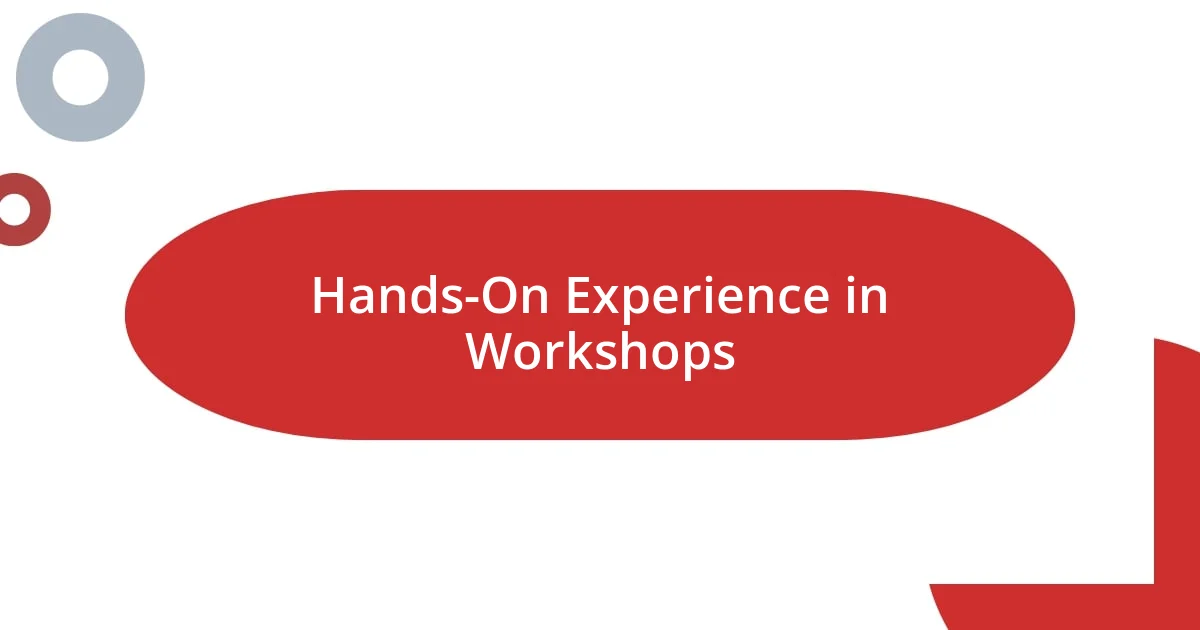
Hands-On Experience in Workshops
Engaging in hands-on workshops illuminated my journey in cheese-making. I remember the thrill of stretching fresh mozzarella for the first time. As my fingers worked the warm curds, I felt a connection to the cheese. It was like a dance guided by the instructor’s expertise, and with every pull and fold, my confidence grew.
One element I didn’t initially consider was the joy of collaborating with fellow participants. In one workshop, we divided into teams to create our own cheeses. The laughter and banter as we experimented with flavors created a lively atmosphere. I asked myself, “Is there anything better than learning together, sharing mistakes, and celebrating our cheesy successes?” That camaraderie made the experience even richer, reinforcing that cheese-making is not just a skill; it’s a shared passion.
I thought I knew what to expect, but those hands-on moments truly challenged my perceptions. The trial and error were essential—remember my first attempt at cheddar? I mistakenly skipped a crucial step, leading to a tangy disaster. But that “failure” taught me resilience and creativity, pushing me to explore and refine my skills further. Each workshop left me hungry for more knowledge, and I couldn’t help but wonder: how much more could I learn with each batch I made?
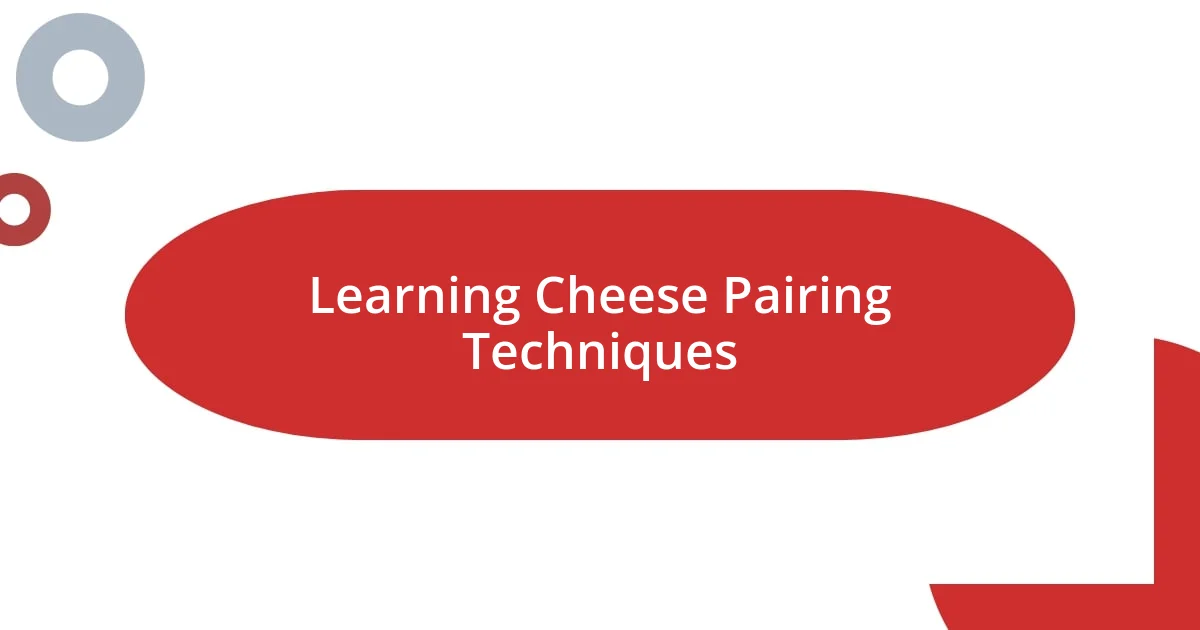
Learning Cheese Pairing Techniques
Learning cheese pairing techniques opened an exciting door for me in the world of cuisine. I remember the first time I sampled various cheeses alongside different wines during a workshop. The instructor encouraged us to think about the contrast and harmony of flavors. I was amazed at how a creamy brie paired beautifully with a crisp Sauvignon Blanc, elevating both the cheese and wine in a way I never expected. Have you ever experienced that delightful moment when flavors come together perfectly? It’s like a culinary revelation!
One memorable pairing exercise involved tasting aged cheddar with apple slices. The sweetness of the apples danced alongside the sharpness of the cheddar, creating a delightful contrast that made each bite a joy. I was struck by how simple ingredients could spark such a complex flavor experience. It got me wondering: how many other combinations had I overlooked before diving into this cheese adventure? Exploring these pairings has not only enriched my cheese-making skills, but it also deepened my appreciation for the art behind each flavor profile.
I began experimenting with my own pairings at home after those workshops. I distinctly remember hosting a small gathering where I showcased a selection of cheeses alongside artisanal bread and various toppings. The thrill of seeing my friends enjoy the combinations as much as I did was incredible! It turned into a fun game of trying to find the best match. What started as a simple cheese board became a lively discussion on flavor pairings and textures. It was in those moments that I truly realized that learning cheese pairing techniques wasn’t just an educational experience; it was a way to connect with others over shared tastes and discoveries.
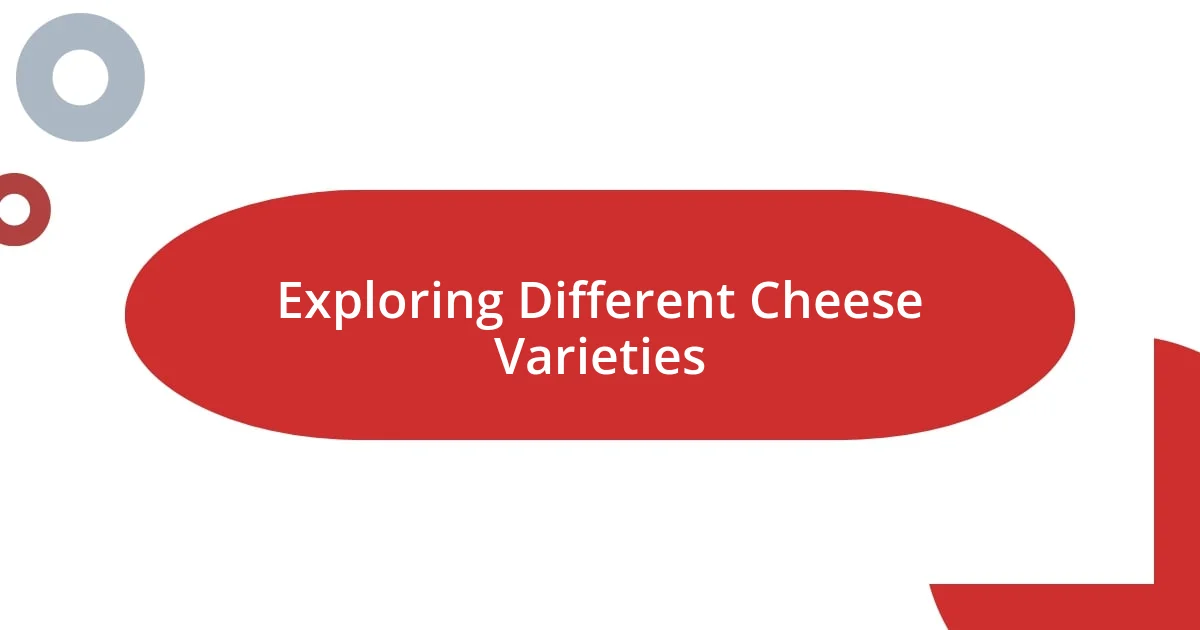
Exploring Different Cheese Varieties
Exploring different cheese varieties was like embarking on a flavorful journey that truly excited my palate. I vividly recall a workshop dedicated entirely to artisan cheeses. Each cheese had its own distinct aroma and texture, which sparked my curiosity. I still remember the creamy richness of a Camembert contrasted with the nutty notes of a Gruyère—how could such differences arise from similar ingredients? It made me consider the artistry behind each cheese-making process.
What struck me most was learning how regional influences create unique cheeses. One workshop focused on Italian cheeses, where I tasted a pungent Gorgonzola that transported me straight to the lush fields of Northern Italy. I can still feel the blend of sharpness and creaminess on my tongue. I couldn’t help but ask myself, “How much do our surroundings affect flavor?” The discussion around how local flora and climate impact cheese drew me in, making the connection between the land and the product palpable.
The creativity I saw in crafting flavored cheeses was also inspiring. I remember one instructor showcasing a delightful lavender-infused goat cheese. As I spread it on crackers, the floral aroma mingled with the tanginess, creating an unforgettable taste. I wondered, “What other unconventional ingredients could elevate cheese to another level?” This experience ignited my desire to experiment more in my own kitchen, pushing the boundaries of flavor with the wide array of cheeses I had come to love.
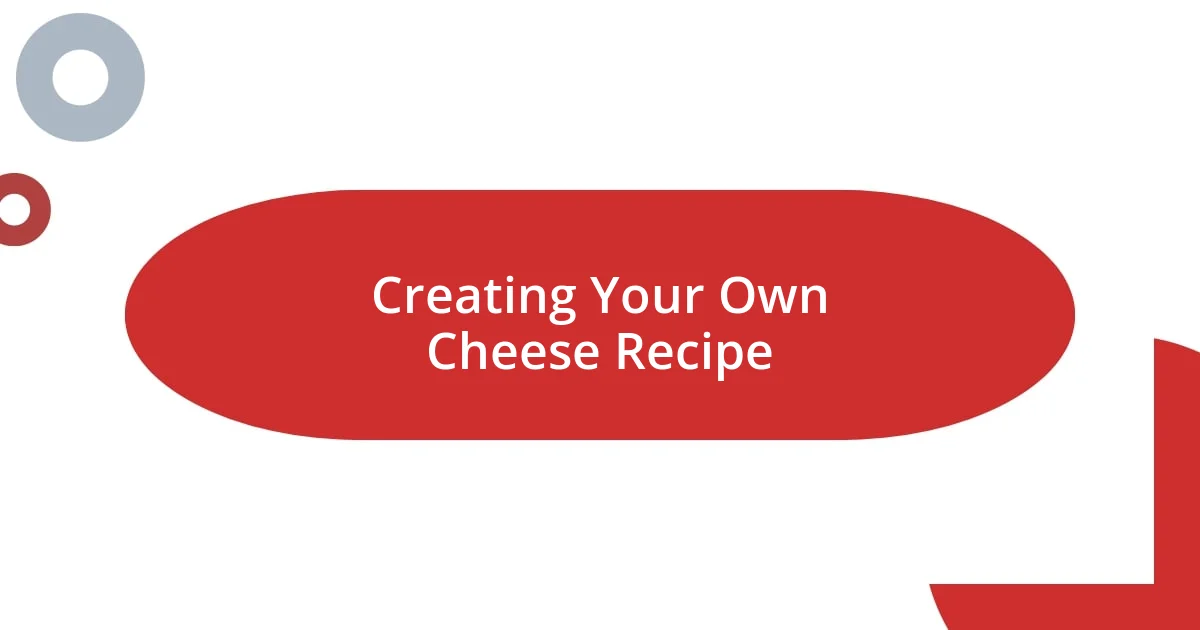
Creating Your Own Cheese Recipe
Creating your own cheese recipe is one of the most rewarding experiences I’ve had. I remember sitting down with a notepad, jotting down my favorite flavors. I wanted to combine the sharpness of a blue cheese with the creamy texture of a mascarpone. As I mixed my initial batch, the anticipation was palpable—would my creation work, or would it fall flat?
During those early trials, I realized that experimenting with different herbs and spices was crucial. I once added fresh basil into a ricotta mixture, and the result took my breath away. It dawned on me: how could such a simple addition transform the overall flavor profile? I started keeping a journal of ideas, noting successful combinations and those I could improve upon, which became an invaluable tool for my cheese-making journey.
As I perfected my cheese recipes, I found joy in sharing my creations with friends. I recall one evening when I unveiled my first homemade cheese, infused with garlic and chives. The look of delight on my friends’ faces was priceless. “How did you make this?” they asked, and I felt a surge of pride. It made me reflect: isn’t sharing food a way of connecting with others on a deeper level? That moment solidified my passion for cheese-making and ignited a desire to continue creating unique recipes that tell a story through flavor.



